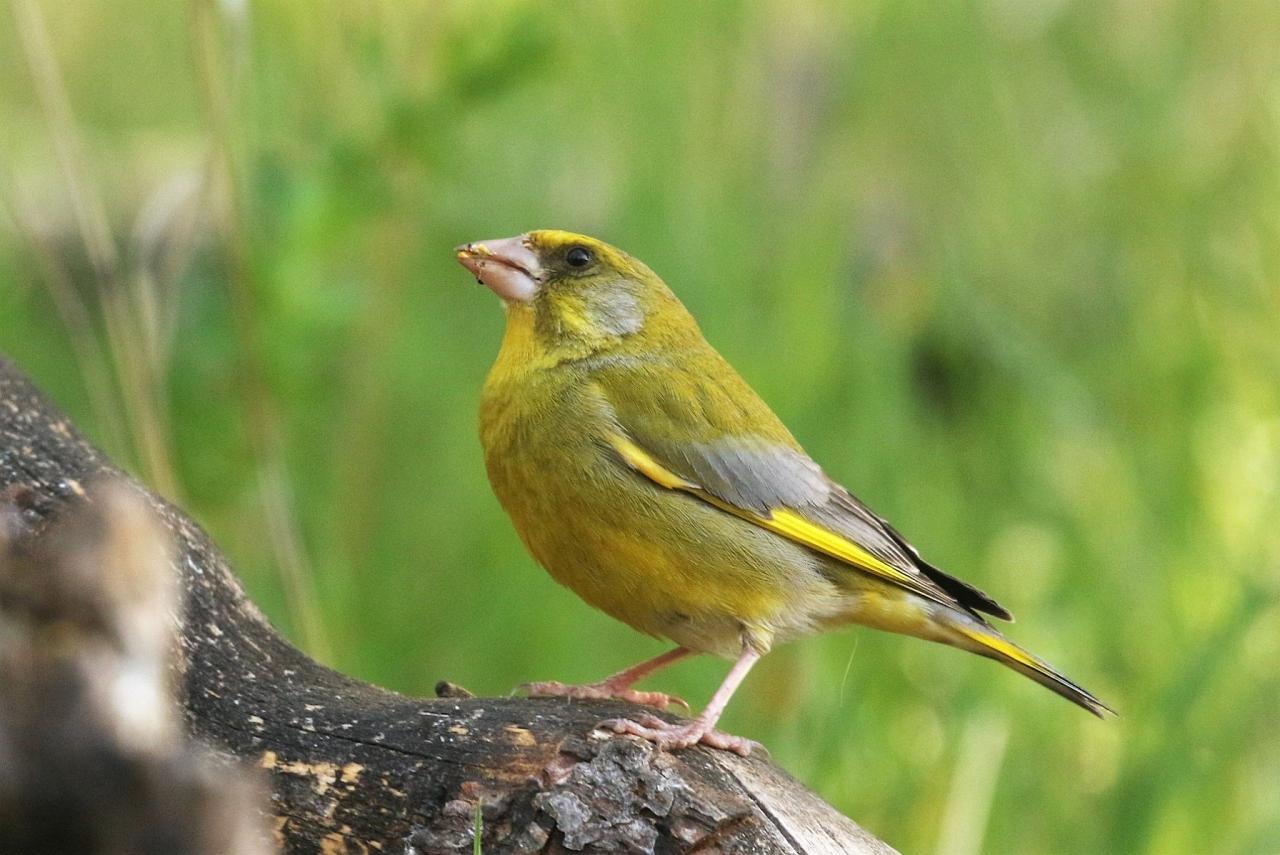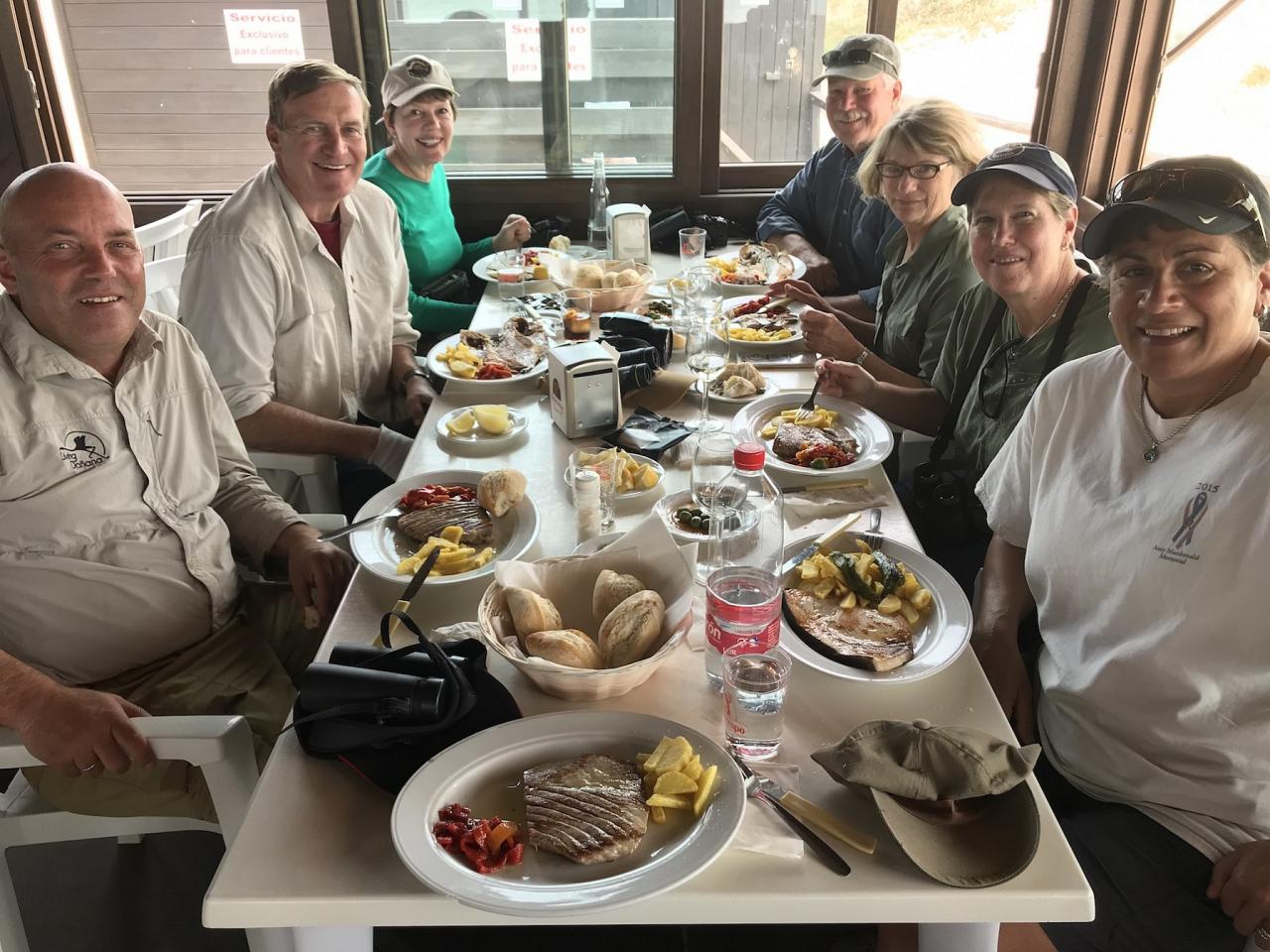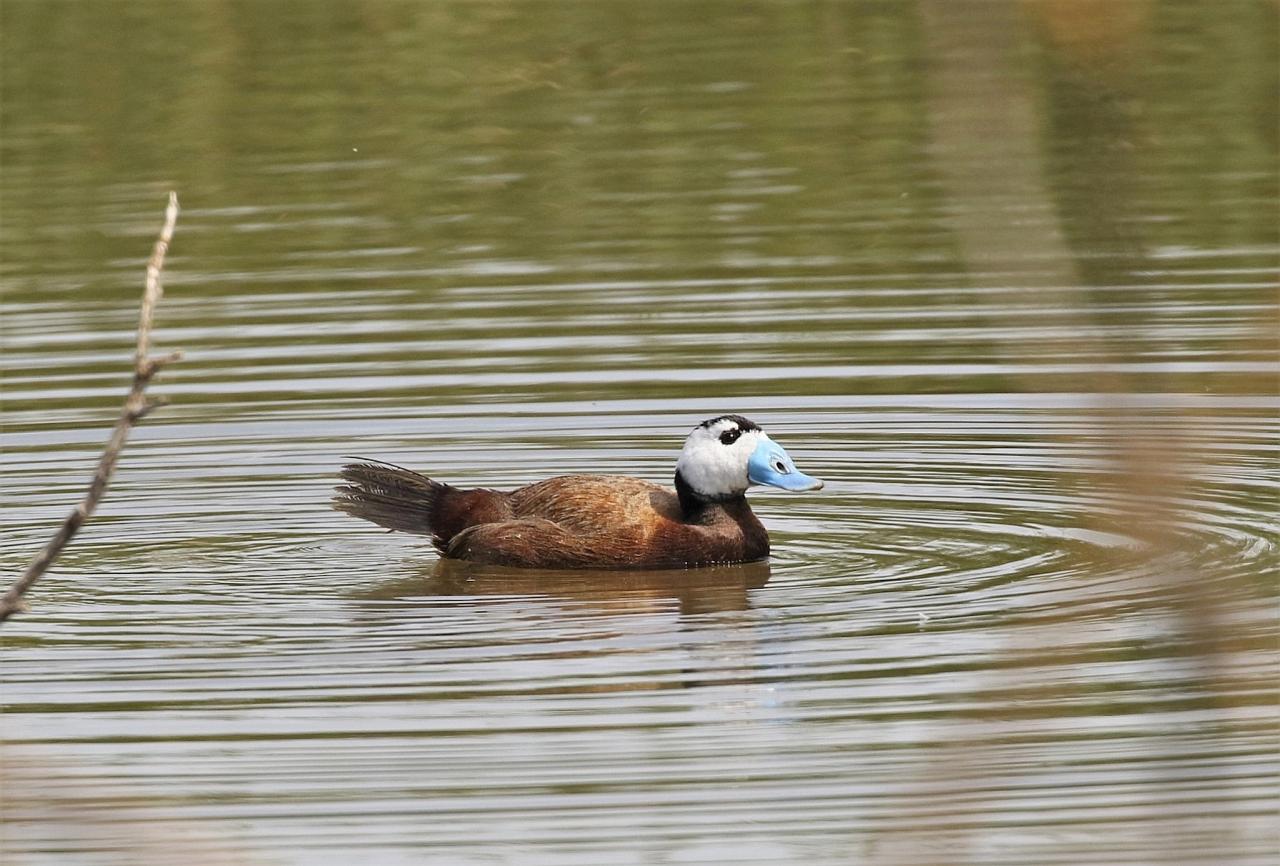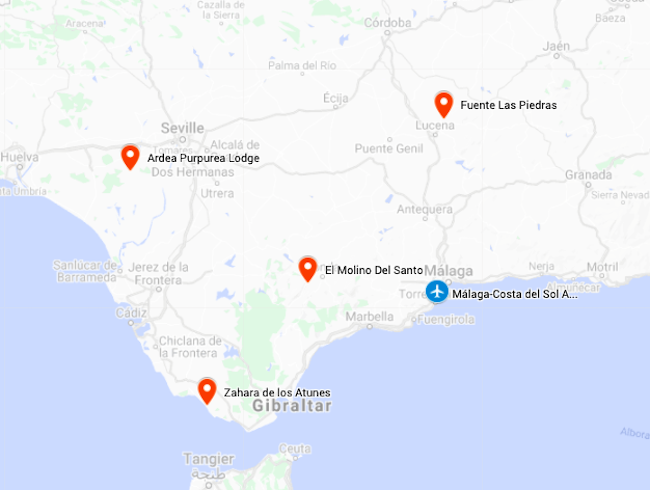- Overview
- Full Itinerary
- Photo Gallery
- Costing
- Travel Details
- Trip Reports
- Guide
- Map
- Know Before You Go
- Other Trips You May Like
Spain enjoys some of the richest and most exciting birding in all of Europe. It sits on a migratory pathway and with a wide variety of habitats, it is a top European birding destination. On this tour, our field days occur in scenic landscapes that include hilltop villages, historic churches, and shady groves.
We carefully crafted this tour with a good pace in mind. This tour focuses on the southernmost autonomous region in Spain, Andalusia. The landscape here is almost tropical, with a mixture of palms, stone pines, and subtropical flowering trees. Birds from further north in Spain and beyond begin to flow southward at this time of year, filling the woodlands, wetlands, and coastline with both absolutely numbers and diversity. In addition to birding and natural history, we make time to experience the many cultural, architectural, and culinary delights that the lovely country of Spain has to offer.
Our autumn Spain birding and nature tour begins in the Sierra de Andújar near Cordoba in search of Iberian Lynx, before heading southwest to the wetlands of Donana (the most extensive wetland area in western Europe). Then, we continue to Tarifa near the Strait of Gibraltar to enjoy the spectacle of bird migration and finish our journey in the limestone karst scenery near Ronda.




- “It was a fantastic trip. Due to our guide’s keen eye, local knowledge and passion for birds, we saw a large number of species. All during the migration south to Africa just a short distance across the straight of Gibraltar. While our focus was birding, I really appreciated the overall experience and cultural aspects of the trip.” — Charles Mahoney, 2023 Traveler
- "Fabulous! Very well-organized with an extremely knowledgeable guide. Top highlights: Spanish Lynx, Griffon colonies around Tarifa, and whale watching.” — Jody Hallstrom, 2023 Traveler
Tour Highlights
- Explore one of the largest and most important wetlands in Europe, Doñana National Park, and experience its rich diversity of water birds, including Greater Flamingo, Eurasian Spoonbill, Squacco Heron, and Collared Pratincole
- Immerse in the exquisite Romanesque and Moorish architecture of historic Sevilla and Cordoba
- Discover the great diversity of raptors (up to 20 are possible!) that Spain has to offer, with highlights including Cinereous and Egyptian Vulture, Spanish and Booted Eagle, and Montagu’s and Eurasian Marsh-Harrier
- Enjoy the rich dance and folkloric music traditions of southern Spain with an evening Flamenco performance
- Search for the elusive Iberian Lynx, a highly Endangered wild cat that specializes in hunting rabbits
- Witness the spectacle of fall migration near the Straits of Gibraltar, where shorebirds, raptors, and songbirds stage to cross the last stretch of water before heading into Africa
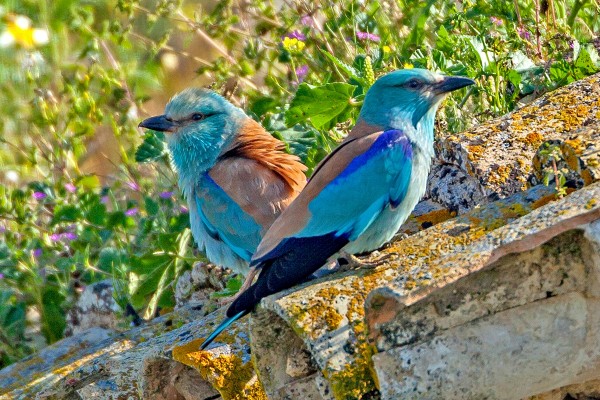

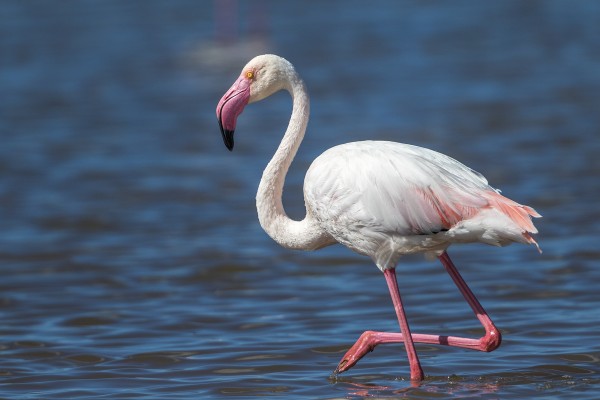

Trip Itinerary
Itineraries are guidelines; variations in itinerary may occur to account for weather, road conditions, closures, etc. and to maximize your experience.
Thurs., Sept. 4 Welcome to Malaga, Spain
Please plan to arrive in time for the welcome dinner at 7:30PM. We choose a hotel near the airport. Your arrival day can be a day to relax after a long journey, but for those who do not want to waste any time, there is a famous birding site close to the hotel. The Guadalhorce Nature Reserve extends between the two branches of the Guadalhorce River. Comfortable hides overlooking pools provide shelter from wind, rain or sun, with very easy, level trails to follow around this small reserve. Birds one may see here include a variety of classic Mediterranean wetland birds such as White-headed Duck, Greater Flamingo, Pied Avocet, Audouin’s Gull, Eurasian Spoonbill, and Western Yellow Wagtail.
Also, a visit to the city center of Malaga or one of the nearby beaches might be an option. All are close and within easy reach.
Accommodations at the Hotel Travel Lodge, or similar, Malaga (D)
Fri., Sept. 5 – Sun., Sept. 7 Drive Into the Mountains in Andujar | Birding & Searching for Iberian Lynx
This morning we drive about two and a half hours to the Sierra de Andújar, home to some of the largest areas of Mediterranean forest in Spain. We then enjoy two and a half days exploring this fascinating forest. Cork oak is the dominant tree species here, the very same tree responsible for most of the quality corks in wine bottles around the world. In more arid areas of the park, thickets of rosemary, lavender, and marjoram predominate. It is here that we home to observe the Iberian Lynx, a wild cat endemic to the Iberian Peninsula and listed as Endangered by IUCN. There are only two viable populations left in the world of this species, with Sierra de Andújar being one of them. This area is also very good for observing a variety of bird species, particularly raptors such as Golden Eagle, Eurasian Griffon, Cinereous Vulture, Egyptian Vulture, and (with luck) the regionally endemic Spanish Eagle.
Accommodations at Hotel la Caracola in Sierra de Andújar or similar (B,L,D)
Mon., Sept. 8 Andujar | La Doñana
After breakfast, we have a comfortable half-day drive to Villamanrique de la Condesa in La Doñana region with our driver to reach our next hotel. Here, we meet our new local guide, an expert for this region.
After settling into our hotel, we visit the wetlands that flank the Caño del Guadiamar. This productive area is home to hundreds of herons, egrets, spoonbills, storks, grebes, terns, and more! The reeds and tamarisks are full of both singing Eurasian Reed-Warbler and Great Reed-Warbler. By around noon, we reach Dehesa Abajo. This portion of the park features a good example of the primitive original forest that once blanketed large parts of Andalusia, Spain. This woodland attracts numbers of European Bee-eater. Surrounding wetlands attract large numbers of Red-crested and Common Pochard, Greater Flamingo, Great Crested Grebe, and more. We search through these large rafts of waterfowl for less common ones such as Marbled Teal, White-headed Duck, and Red-knobbed Coot.
An optional night walk may produce some exciting nocturnal species: Eurasian Scops-Owl, Little Owl, Tawny Owl, and Red-necked Nightjar.
Accommodations at Hotel Ardea Purpurea in Villamanrique de la Condesa (B,L,D)
Tues., Sept. 9 Doñana National Park
We dedicate our first morning here to visit a restricted area of Doñana National Park. Here, we find two important ecosystems: the Mediterranean woodland and wetlands. Our goal in the pine and cork oak woods is Iberian Lynx, one of the most endangered wild cat species in the world. The population is in decline due to sharp declines in rabbit populations (it preys exclusively on European Rabbit), as well as fragmentation of habitat. Doñana is one of the two last strongholds for this species.
We then we drive towards the paddy fields of Cantarita. We cross the characteristic rice plantations that dominate this region, before reaching the Brazo de la Torre and the boundary to the natural sanctuary of Doñana National Park. The elegant herons and egrets, the beautiful Collared Pratincole, the colorful Western Swamphen, the abundant Glossy Ibis – this is just a sampling of the extensive variety of birds that use this ecosystem during the different stages of rice cultivation.
We will have lunch in a local restaurant or a picnic lunch.
Accommodations at Hotel Ardea Purpurea in Villamanrique de la Condesa (B,L,D)
Wed., Sept. 10 Doñana National Park
The Brazo del Este Natural Park is 17 kilometres south of Seville, where the main channel of the Guadalquivir forks off. This Special Protection Area is the result of modifications that man has been making to gain cropland from the Guadalquivir, one of the oldest branches of the river that runs through the marshes. Despite a large amount of human intervention, which started at the beginning of the last century, it has become an exceptionally important wetland for birds. With completely flat land, the channel is accompanied by rich water vegetation and a multitude of wetland species (especially in summer when Doñana itself dries out). Some of the species that we may encounter here include Garganey, Marbled Teal, Greater Flamingo, Northern Lapwing, Black-tailed Godwit, Eurasian Marsh-Harrier, Woodchat Shrike, Zitting Cisticola, and Spanish Sparrow.
If we have time, we will visit the nearby Salinas de Bonanza. These saltpans host large numbers and diversity of shorebirds and gulls, including Black-winged Stilt, Pied Avocet, Kentish Plover, Curlew Sandpiper, Little Stint, Red-necked Phalarope, Green Sandpiper, Slender-billed Gull, Audouin’s Gull, and Little Tern.
Accommodations at Hotel Ardea Purpurea in Villamanrique de la Condesa (B,L,D)
Thurs., Sept. 11 Doñana | Tarifa | Straits of Gibraltar | Bird Migration
After breakfast, we drive about two hours south to Tarifa and the Straits of Gilbralter with our driver, and here wemeet our next local expert guide. Every year, Tarifa and its surrounding areas experience one of the greatest natural events that one can witness in nature: the spectacle of bird migration. Only a little over eight miles from the continent of Africa, this strategic location at the southernmost tip of continental Europe lies on the main migratory bottleneck that funnels millions of birds from Western Europe across the Straits of Gibraltar to Africa twice a year.
During our time in this exciting area, we focus our efforts on visiting several sites in search of migratory birds including Black Kite, European Honey Buzzard, Egyptian Vulture, Black Stork, and Lesser Kestrel. Where we go will depend on weather conditions, but we have an expert guide who will find us the best places
Accommodations at La Codorniz or Zahara de los Atunes (B,L,D)
Fri., Sept. 12 Bird Migration in Tarifa
After breakfast, we enjoy a morning excursion by private boat to observe seabirds of the western Mediterranean (Great Skua, Northern Gannet, Cory’s Shearwater, and Balearic Shearwater) and cetaceans. We might see Long-finned Pilot Whale, Common Bottlenose Dolphin, and Short-beaked Common Dolphin. During the first half of September, it is also possible to see Sperm Whale and Orca (Killer Whale). In case of bad weather, we will visit a private island near Tarifa, which is also good for sea watching.
In the afternoon, we visit several areas to look for migrating birds and roosting areas for raptors. Again, where we go will depend on weather conditions, but of course we have an expert guide who will find us the best places.
Accommodations at La Codorniz or Zahara de los Atunes (B,L,D)
Sat., Sept. 13 Visit to La Janda
La Janda represents a mosaic of habitats due to its many historical uses. There are large pastures, an important wild olive grove, rice paddies, and canals with marsh vegetation that together welcome millions of birds through the different seasons to rest and refuel. Why is La Janda so important? It is the last stop for birds before leaving Europe during their annual fall migration, making it a vital site for birds to regain their strength before continuing their journey across the Strait of Gibraltar into North Africa and beyond.
Birds we may see here include European Turtle-Dove, Collared Pratincole, Short-toed Snake-Eagle, Bonelli’s Eagle, Montagu’s Harrier, Woodchat Shrike, Calandra Lark, Sardinian Warbler, Northern Wheatear, and Common Redstart. Nearby, we have the opportunity to see the Northern Bald Ibis. Here, the population of this Endangered species is part of a reintroduction program and intensively managed to secure their numbers under Proyecto Eremita.
Accommodations at La Codorniz or Zahara de los Atunes (B,L,D)
Sun., Sept. 14 Tarifa | Ronda
After breakfast, we drive about two hours with our driver to Benaojan (near Ronda) and meet our next local birding guide.
After settling into our hotel, we go out for birding in the Serrania de Ronda in the afternoon. The nearby Rio Guadiaro is only one of two rivers in the area to flow year-round. This river system acts as a highway for migratory passerines on their southward journey, which attracts an accompanying set of migratory (and non-migratory) raptors. In fact, the geographical location of this river and the surrounding mountains makes this one of Europe’s best areas to observe concentrations of predatory birds. With a bit of luck, we should be able to see up to four species of eagle here—Bonelli’s, Booted, Short-toed Snake-, and Golden Eagle. Indeed, being so near the famous Straits of Gibraltar, this area features a rich assortment of bird species migrating south in autumn.
Accommodations at Molino del Santo (B,L,D)
Mon., Sept. 15 Birding in the Sierra de Grazalema
Today, we visit the Sierra de Grazalema and adjoining areas. Established in 1977, this natural park offers spectacular, rocky scenery and a large number of limestone caverns. It is also home to an endemic tree, the Spanish Fir Abies pinsappo, a tree species that became isolated in these mountains since before the last ice age. Typical mountain birds we may observe in this area include the colorful Blue Rock-Thrush, dapper Black Wheatear, and intelligent Red-billed Chough. Throughout the park, there are large areas of Cork Oak Forests, often known as dehesas in Spain, which can hold good numbers of migrant warblers as well as resident passerines such as Crested Tit, Short-toed Treecreeper, and Wood Lark.
This evening enjoy a farewell dinner together, reviewing favorite species and highlights of the trip. We will also complete our final bird and mammal tally for the trip.
Accommodations at Molino del Santo (B,L,D)
Tues., Sept. 16 Departures
Our tour comes to an end today. To facilitate meeting flights out mid-day and onward, our plan is to get up and go, arriving at the airport by 9:30 AM for flights out after NOON. We will have breakfast en route before our flock disperses. (B,L)
Cost of the Journey
Cost of the journey is $6390 DBL / $6990 SGL* per person from Malaga, Spain, based on double occupancy.
Included: accommodations for 12 nights, meals as specified in the itinerary, professional guide services, local guides, local park and reserve entrance fees, and miscellaneous program expenses.
Not included: roundtrip airfare to or from Malaga, airport transfers, or items of a personal nature such as: laundry, telephone, drinks from the bar, or gratuities for porterage or personal services.
*Based on the exchange rate on September 5, 2024. If the rate changes by more than 5%, Naturalist Journeys reserves the right to adjust pricing.
Travel Details
Please plan to make air travel plans only after the minimum group size has been met. We will send you a confirmation email as soon as the trip has been confirmed.
Arrival and Departure Airport: Malaga-Costa del Sol (AGP)
Arrival Details: Plan flights to arrive September 4, 2025, if possible in time for the welcome dinner at 7:30 PM. Plan to take a taxi to the nearby hotel.
Departure Details: Plan flights to depart September 16, 2025, after 12:00 PM. We have a 1.5 hour drive to Malaga from our hotel and plan to arrive at the airport by 9:30 AM to accommodate mid-day flights.
Travel Details: If you arrive early to rest up from your travels or to explore Malaga, our operator can book an early night room at the local hotel we use for you. There are birding areas within walking distance of the hotel and Malaga is a great small city with a lot to do, including the famous Picasso Museum. Adding time on at the start is best, to avoid the cost of a private transfer back to Malaga ($200+).
Browse below for trip reports and species lists from past versions of this and other tours from this destination.
Spain
- May 2018
- May 2019
- September 2021
- April 2022
- September 2022
- April 2023
- September 2023
- April 2024
-
James Petersen

James grew up in New Jersey and started birding at a young age. He continued that passion by getting an undergraduate degree in Wildlife Ecology from the University of Maine. Since then, he has worked and birded extensively across the United States, including conducting point counts and banding ducks in Maine; identifying and counting waterfowl in Nebraska; counting migrating raptors in Texas, Arizona and Wyoming; and surveying for Northern Goshawks in northern California. The past three springs he has been a bird guide in the Chiricahua mountains in southeast Arizona, and he enjoys sharing his passion for birds with others. His favorite bird is the Red-headed Woodpecker.
Other trips with James Petersen
-
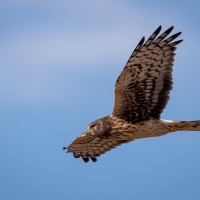 Summer in Maine: From Acadia to the Northwoods CLOSED - See our Monhegan Island tour in September!May 21 - 28, 2025
Summer in Maine: From Acadia to the Northwoods CLOSED - See our Monhegan Island tour in September!May 21 - 28, 2025 -
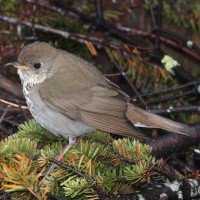 New Hampshire's Mt. Washington Warblers & Bicknell's ThrushJune 4 - 10, 2025
New Hampshire's Mt. Washington Warblers & Bicknell's ThrushJune 4 - 10, 2025 -
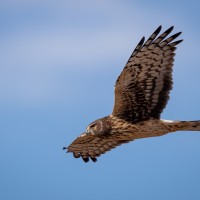 Summer in Maine: From Acadia to the Northwoods FULL - See our May departure!July 6 - 13, 2025
Summer in Maine: From Acadia to the Northwoods FULL - See our May departure!July 6 - 13, 2025 -
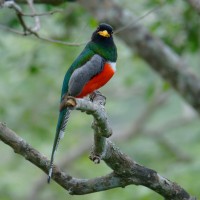 Arizona Monsoon Madness: Birding & Nature in a Season of Wonder!August 2 - 9, 2025
Arizona Monsoon Madness: Birding & Nature in a Season of Wonder!August 2 - 9, 2025 -
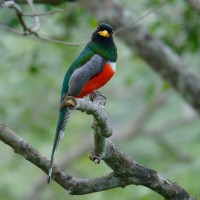 Arizona Monsoon Madness: Birding & Nature in a Season of Wonder!August 17 - 24, 2025
Arizona Monsoon Madness: Birding & Nature in a Season of Wonder!August 17 - 24, 2025 -
 Western Panama: Tranquilo BayOctober 18 - 25, 2025, w/Mt. Totumas extension
Western Panama: Tranquilo BayOctober 18 - 25, 2025, w/Mt. Totumas extension -
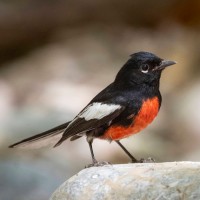 Southeast Arizona: Sky Island Fall SamplerNovember 2 - 9, 2025
Southeast Arizona: Sky Island Fall SamplerNovember 2 - 9, 2025 -
 Costa Rica Birding & NatureJanuary 5 - 12, 2026, w/Pacific Coast extension
Costa Rica Birding & NatureJanuary 5 - 12, 2026, w/Pacific Coast extension -
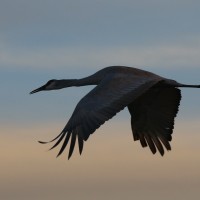 New Mexico: Winter Birds & Grand LandscapesJanuary 18 - 26, 2026
New Mexico: Winter Birds & Grand LandscapesJanuary 18 - 26, 2026
-
Essential Information +
Pace & Protocols +
Packing List +
Suggested Reading List +
Useful Links +
Photo credits: All photos courtesy of by Pieter Verheij Photography, Spanish Nature unless noted otherwise. Griffon Vultures; Greater Flamingo; Fox; Great Spotted Woodpecker; Booted Eagle; White Stork; Lesser Kestrel; Eurasian Spoonbill; European Roller; Azure-winged Magpie; Greater Flamingo; European Bee-eater; Black Vulture; Seafood in Andalusia, Carlos Sanchez; Cordoba, Carlos Sanchez; Iberian Ibex, Carlos Sanchez; Common Chaffinch, Carlos Sanchez; Kingfisher, Tom Dove; Griffon Vulture; European Roller; Great Spotted Woodpecker; Serin; Spain group, Carlos Sanchez; Red Squirrel; Redwing; Spanish Imperial Eagle; Wildflower, Carlos Sanchez; Great Reed Warbler; Spotted Redshank; Eurasian Spoonbill; Fox; European Greenfinch by Carlos Sanchez; Iberian Ibex by Carlos Sanchez; Lizard by Carlos Sanchez; Seafood in Andalusia by Carlos Sanchez; Tortoiseshell Butterfly by Carlos Sanchez; White Stork by Carlos Sanchez; White-headed Duck by Carlos Sanchez.





